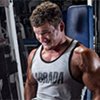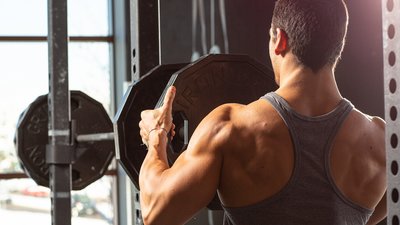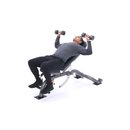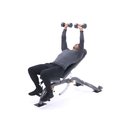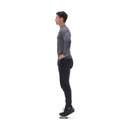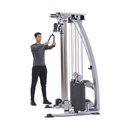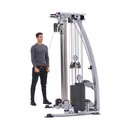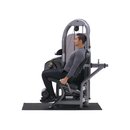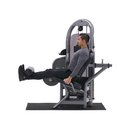Growing up, bodybuilding wasn't pushed on me at all. This might sound strange to some people, seeing as my dad is Lee Labrada, the IFBB Hall of Fame bodybuilder, but it's completely true. I consumed a healthy diet as a child, but I never ate that much. As a result, I was always skinny.
More than anything, I loved sports. I played hockey from the time I was 5 years old until I was 12, and I never felt like I was at a disadvantage due to my lack of size. I could skate fast and was pretty strong—what else did I need?
In seventh grade, I became interested in football, and from the first practice I was hooked. I quickly realized that unlike hockey, I was at a distinct disadvantage. I had fun and did well enough in my first season, but my growing passion for football made me start looking for ways to put on size so I could become a better player. I've learned this is a common story among bodybuilders. Many, including my dad and Shawn Ray, got their feet wet in bodybuilding in order to get better at high school football.
I immersed myself in the afternoon and summer strength and conditioning camps my school had to offer, and while I made some progress initially, it wasn't as much as I had hoped for, or expected. Following my eighth-grade season, I weighed a whopping 100 pounds, and I knew things had to change big time if I ever wanted to see playing time in high school.
Grow Like Dad
I consulted with—who else?—my dad, who made it clear that if I wanted to gain weight, I had to dramatically increase my caloric intake. Sure, I was training hard, but I had to eat more! That offseason, with his help, I started eating like a horse, and it made a world of difference. I gained 25 pounds that year alone.
As I kept working out and getting bigger, I began looked forward to training for football almost as much as I enjoyed playing football. By my senior season, I had built myself into a 5-foot-8, 210-pound running back and strong safety, and I signed a letter of intent to play football for a Division-II university in Boston. My senior season was a major letdown, however; I tore my hamstring on the first day of regular practice.
After rehabilitating, I returned and played just four games before hurting myself again. This time, I suffered an avulsion fracture when my quadriceps tendon pulled a piece of bone off my hip at the growth plate, which was still soft because I was so young. Essentially, my legs had become so strong that the tendon had overpowered the connection to the bone, resulting in the fracture.
Football was looking less and less like my future, but as an upside, these injuries gave me an opportunity to train on a strict bodybuilding split routine. I found I had to split up the work for my upper body into multiple sessions so I could still be at the gym as much as I wanted to be. I made incredible progress, and by the time I was cleared to begin running, my athletic dreams had transformed along with my musculature.
Soon enough, I found I wasn't enjoying all the things I used to enjoy about football. The highlight of any day became getting into the weight room. I decided that fall that I was done with football, and I was going to become a competitive bodybuilder.
Do The Caloric Math
That was three years ago, and since then, I have been able to transform my body even more, adding layers of muscle and quality size. I now weigh 237 pounds and am holding sub-8 percent body fat. More importantly, however, I've learned through trial and error, and hours upon hours of research, what works for me in terms of training, diet, and supplementation, and what doesn't.
Do you know what doesn't work? The old method of walking up to the biggest guys in the gym and asking them what their splits looks like, what they do for certain body parts, or my favorite, what supplements they take.
Nine times out of ten, the people asking these questions do it with the best of intentions, and they just can't figure out what the big guys' secrets are. All they see are beasts crushing heavy weights in their workouts and drinking concoctions afterward that look questionable for human consumption.
The real secret is what those guys do during the other 22 hours of the day. What sets them apart from the people who are not growing is nutrition. Many people might think they know what I mean by that statement, but even they could be way off the mark. If you are truly trying to put on muscle mass, your traditional breakfast, lunch, and dinner simply won't suffice, no matter how hearty they are.
The basics of growth are simple: Consume more calories than you expend. In some ways, it's that easy. But figuring how many calories you need to maximize quality growth, well, that's not as simple. Here's how you burn calories during your day:
- Resting metabolic rate: These are the calories burned by your body just so it can function, which accounts for approximately 60 percent of your daily caloric consumption.
- Daily activities: You burn plenty of calories just doing your daily tasks like walking, talking, working, and every other way you pass time outside of the gym.
- Training: These are the calories burned by your workout and cardio.
There are a number of different ways to calculate these numbers, but no matter how you look at it, that's a lot of calories!
The amount of surplus that you'll need varies based by your goals and how your body individually responds. One person might only need a 300-500 calorie daily surplus to make incredible gains, while another might require closer to an extra 1,000 calories. And the bigger you get, the more you will need to eat. This is a result of the increased metabolic rate caused by the added muscle mass and, most likely, your heightened training intensity.
The New Macros: Lean, Complex, Healthy
As you know, figuring out how many calories you need is only one part of the battle. Choosing which foods are the best to fuel your body and achieve your daily required caloric surplus is the other.
There are several schools of thought on this, but the one that I am most partial to, and have had the most success with, is simply eating large amounts of clean food. And no, I'm not talking about how you wash your vegetables.
I've never been one to go on the pizza-and-ice-cream bulking diet, because while you'll probably put on weight, you will also be left with a lot of empty calories and unwanted body fat that you'll have to burn off later.
Remember that bodybuilding is a marathon, not a sprint! So why put on large amounts of unnecessary body fat when you can achieve the same end goal of building dense muscle, while looking and feeling much healthier, by doing it the right way? It's simple: You can't go wrong by eating lean proteins, complex carbs, and healthy fats.
These clean-food options aren't complete lists, but they are guidelines. Why "ultra-lean" ground beef? Food marketers in our country have done a great job of capitalizing on consumer ignorance, so when the average person picks up a package of ground beef and sees a big "93 percent fat free" sticker, they think they are making a great choice. This beef, at 93 percent fat free, is actually approximately 33 percent fat per serving.
How is this possible, you ask? Because the beef is 93 percent fat free by weight, not by calories! A gram of protein has 4 calories, and one gram of fat is 9 calories, so you can see where it can get tough to stay on top of the numbers. This is why I look for 98 percent fat-free lean meats for my diet; these work out to approximately 10 percent fat per serving, by calories. I keep my proteins lean, and make up for it by eating fats from the "healthy fats" list.
The New Macros List
Lean Proteins:
- Chicken breast
- Turkey breast
- White fish
- Ultra-lean ground beef
Complex Carbs:
- Brown rice
- Sweet potatoes
- Rice cakes
- Quinoa
Healthy Fats:
- Salmon and other fatty fish
- Fish oil or krill oil
- Nuts and seeds
- Olive oil
Supplementation
Before we dive into training, it's important to touch on the supplements I use to augment my nutrition plan. As any smart athlete or coach will tell you, supplements can't replace hard work and quality nutrition.
They can, however, round out your diet, introduce performance-boosting nutrients, and make getting adequate amounts of specific macronutrient easier.
Protein
Protein is usually the first thing that comes to mind when you talk to someone about supplements, and for good reason. Protein is essential for muscle growth and post-workout repair.
Whey is digested much faster than any other protein source available, which makes it ideal after training. Try to drink your whey within 30 minutes of your workout, targeting roughly 40 grams of protein.
When searching for a good whey protein, look for servings per container, protein per serving, and the presence of any "filler" nutrients like fats and added sugars.
You obviously want to maximize your money spent and give your muscles the best possible quality of protein for optimal results.
Creatine
Creatine monohydrate is simple, safe, effective, extremely well-tested, and cheap. You will experience size, strength, and performance gains while taking it because creatine increases phosphocreatine stores inside your muscles and also causes them to hold more water.
I don't like to mega-dose creatine, so I stick with five grams per day.
Glutamine
Glutamine is the most prevalent amino acid in your muscle tissue, and it's one of the key shuttles for nitrogen into your muscles.
Beyond the muscle-building and recovery benefits of glutamine, it's helpful for immune support and gut health, making it an essential supp in my book.
Take 5-10 grams per day.
Pre-workout
Yes, the stimulant present in nearly every pre-workout is a plus, but you shouldn't purchase a pre-workout product just for caffeine. You should purchase it because of other physiological boosts.
A good pre-workout will increase blood flow to your working muscles, which increases your strength and endurance by delivering more oxygen and nutrients. This, in turn, increases your performance and supports growth.
Look for a pre-workout powder that contains a full dose of creatine, beta-alanine, glutamine, and other performance ingredients.
Stay away from products that feature proprietary blends. That's usually where manufacturers hide useless pixie dust amounts of exotic sounding ingredients that don't help you much.
Fast-Acting Carbohydrates
I don't normally advocate fast carbs, but they can be helpful around your workouts. Since your body rapidly processes simple carbs, they allow you to replenish the glycogen in your muscles that you deplete during training.
This helps you recover faster and train harder. After a workout, fast carbs spike your insulin and help dliver nutrients to your fatigued muscles.
You can get simple carbs from fruits, sugary sports beverages, dextrose, or any number of extremely simple carbohydrates. I personally use Labrada's PowerCarb product; it contains a special carbohydrate molecule designed to serve the exact function I described above, but better than any of the previous options listed. I enjoy sipping one scoop throughout my workout; it helps me sustain a full pump.
BCAAs
When you consume proteins, your body breaks them down into amino acids. There are three essential amino acids called branched chain amino acids, or BCAAs, which are leucine, isoleucine, and valine. These amino acids are some of the most important for muscle growth, repair, and recovery.
I like to supplement with BCAAs before, during, and after my workouts to prevent catabolism (or breakdown) of my hard-earned muscle tissue and provide the fuel necessary for additional growth and energy during the intense stress of my training.
Hunter's Meal Plan And Supplements
Here's how a week of nutrition and supplementation looks for me on the system described above:
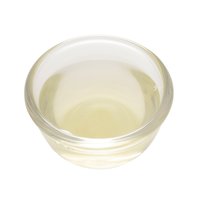 Egg Whites
Egg Whites
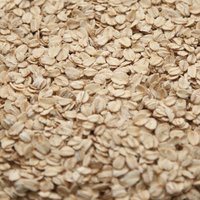 Oats
Oats
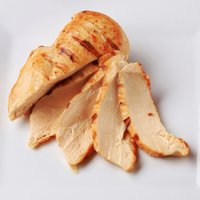 Chicken
Chicken
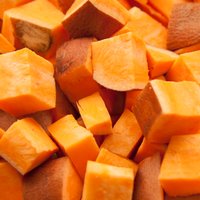 Sweet Potato
(baked)
Sweet Potato
(baked)
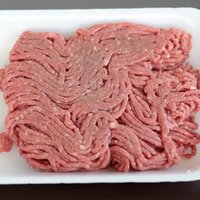 Ground Turkey
Ground Turkey
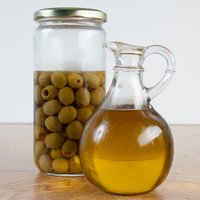 Olive Oil
Olive Oil
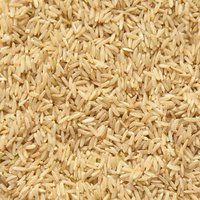 Brown Rice
Brown Rice
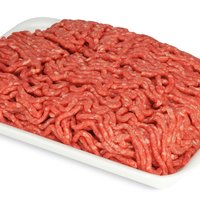 Ground Beef
(99% lean)
Ground Beef
(99% lean)
 Sweet Potato
Sweet Potato
 Chicken
Chicken
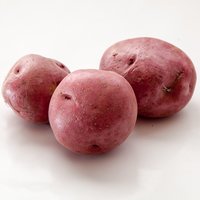 Red Potato
Red Potato
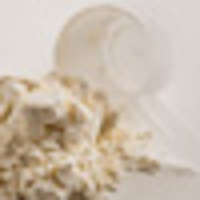 Protein Powder
(Labrada Lean Pro8 Protein)
Protein Powder
(Labrada Lean Pro8 Protein)
 Oats
Oats
Training for Mass
Training regimens are a dime a dozen, and they're almost all impressive in their own way. You have to listen to your body and find the one that works for you, or alter an existing one to better suit yourself. In the end, I believe it comes down to optimizing what I like to call your "training intensity equation." Here's what that looks like:
Training Intensity = (Volume x Weight used)/Rest time
This isn't an equation that will spit you out a number. Instead, it's meant to portray the relationship between the variables, so you can change them according to what works best for your body. You can increase or decrease your training intensity by either changing the volume, the weight you use on each set, your rest time, or all three.
I've been training on a push/pull-style split almost since I started, with all of the trial-and-error experimentation happening in the variables making up the training intensity. Initially, I pounded my larger body parts with upward of 25 sets. While I initially got great gains, my progress quickly slowed despite my good nutrition, supplementation, and rest.
What I didn't realize at the time is that you don't grow in the gym—it's the opposite! You incur tears and trauma on a microscopic level, breaking down those precious muscles you have spent so much time and money to build. If the tears and trauma are too great, or they're not given adequate time to recover, you're not doing yourself any favors.
Of course it's normal to be sore or feel like you did something taxing the day after you train, but you shouldn't feel like you got hit by a truck for three days after every workout, either!
The Intensity Sweet Spot
Once I started tweaking my training intensity equation, I found that I experience my best gains doing 12-15 sets per large body part (chest, back, legs) and 8-10 sets per small body part (shoulders, biceps, triceps) using a moderate 8-12 reps. This level of volume allowed me to keep my training intensity high by decreasing my rest time between sets and by performing each set to failure using techniques such as forced reps and negatives.
Training Terms
- Forced Rep: A repetition that a spotter helps you perform after you reach failure. Use forced reps during the last set or two to exhaust your muscles.
- Negative Rep: A rep focusing on the eccentric (muscle-lengthening) portion of the exercise, usually when the weights are being lowered. Perform negatives slower than normal and under complete control. This technique can greatly reduce the amount of weight needed to exhaust a muscle.
- Failure: The point where you are physically unable to do another rep, and need the aid of a spotter to rack or return the weight to the starting position.
Staying mindful of these variables allows me to be more efficient in the gym, as well. My weekly chest and triceps workout takes me 1 hour and 10 minutes, but if I did the same routine in 1 hour and 45 minutes, I will feel like I did significantly less work. And for all intents and purposes, I did!
I challenge you to increase your intensity in some way during your next workout. That increased intensity, as many greats like my father have shown, makes muscles grow. Just stay mindful of the equation to avoid getting hit by the intensity freightliner!
Increase or decrease your training intensity by changing the volume, the weight you use on each set, your rest time, or all three.
My Sample Bodybuilding Workout

BodyFit
$6.99/month- 2,500+ expert-created single workouts
- 3,500+ how-to exercise videos
- Detailed workout instruction
- Step-by-step workout tips
- Training at gym or at home
- Access to Workout Plans
- Access to Bodyfit App
- Store Discounts
Already have a Bodybuilding.com account with BodyFit? Sign In

What comes with BodyFit?

- Instructional Videos
Don't risk doing a workout improperly! Avoid injury and keep your form in check with in-depth instructional videos.

- How-to Images
View our enormous library of workout photos and see exactly how each exercise should be done before you give it a shot.

- Step-by-Step Instructions
Quickly read through our step-by-step directions to ensure you're doing each workout correctly the first time, every time.

BodyFit
$6.99/month- 2,500+ expert-created single workouts
- 3,500+ how-to exercise videos
- Detailed workout instruction
- Step-by-step workout tips
- Training at gym or at home
- Access to Workout Plans
- Access to Bodyfit App
- Store Discounts
Already have a Bodybuilding.com account with BodyFit? Sign In

What comes with BodyFit?

- Instructional Videos
Don't risk doing a workout improperly! Avoid injury and keep your form in check with in-depth instructional videos.

- How-to Images
View our enormous library of workout photos and see exactly how each exercise should be done before you give it a shot.

- Step-by-Step Instructions
Quickly read through our step-by-step directions to ensure you're doing each workout correctly the first time, every time.
Day 3: Active Rest (Abs and cardio)

BodyFit
$6.99/month- 2,500+ expert-created single workouts
- 3,500+ how-to exercise videos
- Detailed workout instruction
- Step-by-step workout tips
- Training at gym or at home
- Access to Workout Plans
- Access to Bodyfit App
- Store Discounts
Already have a Bodybuilding.com account with BodyFit? Sign In

What comes with BodyFit?

- Instructional Videos
Don't risk doing a workout improperly! Avoid injury and keep your form in check with in-depth instructional videos.

- How-to Images
View our enormous library of workout photos and see exactly how each exercise should be done before you give it a shot.

- Step-by-Step Instructions
Quickly read through our step-by-step directions to ensure you're doing each workout correctly the first time, every time.
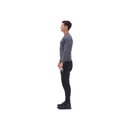
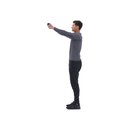

BodyFit
$6.99/month- 2,500+ expert-created single workouts
- 3,500+ how-to exercise videos
- Detailed workout instruction
- Step-by-step workout tips
- Training at gym or at home
- Access to Workout Plans
- Access to Bodyfit App
- Store Discounts
Already have a Bodybuilding.com account with BodyFit? Sign In

What comes with BodyFit?

- Instructional Videos
Don't risk doing a workout improperly! Avoid injury and keep your form in check with in-depth instructional videos.

- How-to Images
View our enormous library of workout photos and see exactly how each exercise should be done before you give it a shot.

- Step-by-Step Instructions
Quickly read through our step-by-step directions to ensure you're doing each workout correctly the first time, every time.

BodyFit
$6.99/month- 2,500+ expert-created single workouts
- 3,500+ how-to exercise videos
- Detailed workout instruction
- Step-by-step workout tips
- Training at gym or at home
- Access to Workout Plans
- Access to Bodyfit App
- Store Discounts
Already have a Bodybuilding.com account with BodyFit? Sign In

What comes with BodyFit?

- Instructional Videos
Don't risk doing a workout improperly! Avoid injury and keep your form in check with in-depth instructional videos.

- How-to Images
View our enormous library of workout photos and see exactly how each exercise should be done before you give it a shot.

- Step-by-Step Instructions
Quickly read through our step-by-step directions to ensure you're doing each workout correctly the first time, every time.
Day 7: Active Rest (Abs and cardio)
